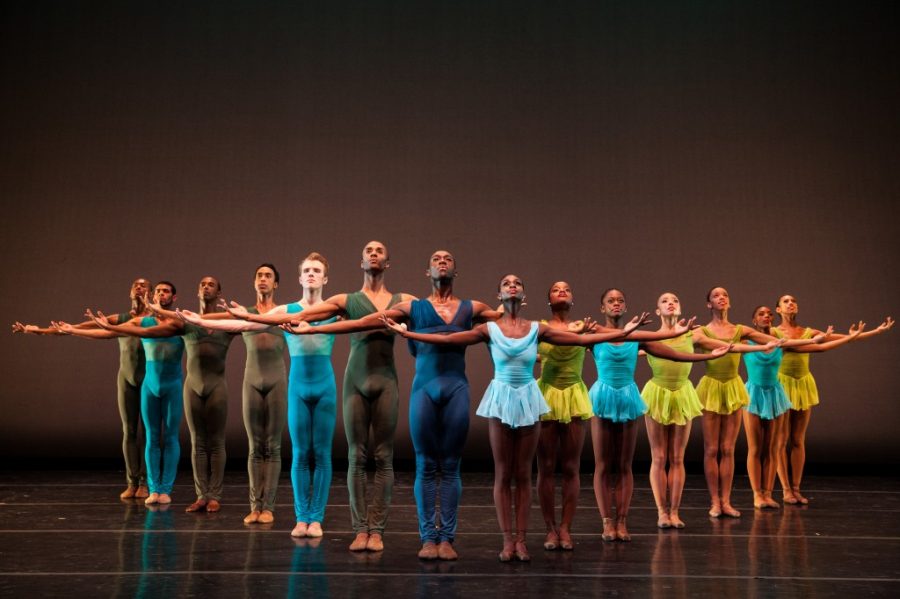

The Dance Theatre of Harlem, which recently made a comeback in the world of classical ballet, was in good form Friday night at New Jersey Performing Arts Center, where they presented a program in honor of Dr. Martin Luther King, Jr. The company was founded in 1969 by Arthur Mitchell, who returned to Harlem after dancing with the New York City Ballet in order to dispel the belief that those of African decent could not dance ballet. Over the years, he, alongside Artistic Director Virginia Johnson, turned the troupe into one of the most exciting dance companies in New York City; at Friday's performance -- their first at NJPAC in over a decade -- they proved they are dancing as passionately as ever.
They opened the program with "Gloria", a classically infused work choreographed by Robert Garland. The piece started off as a spiritual, with its themes of devotion, love, and life; there was a serene sense of pride and peace that suffused the stage as the dancers glided back and forth doing the heel toe, while one soloist dreamily tiptoed in circles across the stage. The performers, decked out in lime green and light blue leotards with wispy short skirts, exuded sophistication and elegance in their body movements; yet at the same time, they showed a beautiful vulnerability -- a sense of surrender to their work. Towards the end a troupe of young girls came out and danced around the more mature dancers, bringing with them a sense of unity. They seemed like a new beginning; the start of the walk of life from childhood to adulthood.
The second piece was like a long day filled with disorder and chaos. "Far But Close", choreographed by John Alleyne, is set to a spoken word piece of the same name by Daniel Beaty. From the beginning, the work captures the imagination of the audience, with the low notes of a bass guitar and Beaty's profound words. The work touches on themes of human connection, letting go of the past, and trusting what is yet to come, which the performers -- two pairs of partners -- act out through their movements. We see them push away, pull close, submit; they become vulnerable, strong, and trusting, all within the same scene.
The third piece "The Return", also choreographed by Robert Garland, paid homage to music greats like James Brown and Aretha Franklin; its mix of soulful dance-offs took the audience back to the late 60s and early 70s. Clothed in lilac and blue leotards and body suits, the performers trailed down the soul train line, kicking their legs up, pop-locking, and doing the Charlie Brown. With their passion and determination, they reminded the audience that The Dance Theatre of Harlem has indeed returned.
DTH will be back in New York April 23-27. For more information, check out their website: [LinkButton]https://www.dancetheatreofharlem.org/company/performances[/LinkButton]